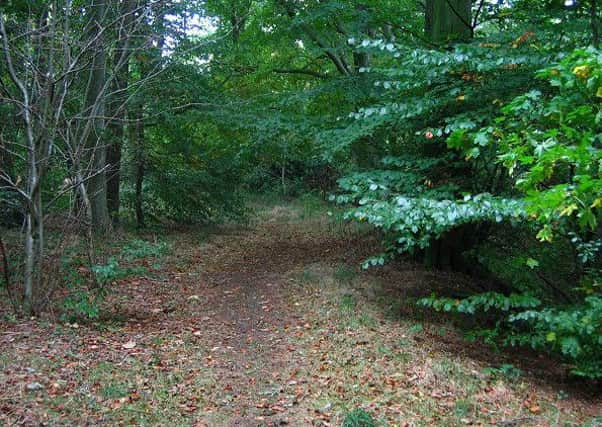Walk of the week: Almondell and Calderwood Country Park


In December I described a festive season stroll on the River Almond Walkway; from Cramond, heading upstream as far as the railway line on the eastern boundary of Edinburgh Airport. An extension of the walkway as far as Kirkliston would be warmly welcomed.
The Almond is quite a significant river, within a steep-sided and partly wooded gorge, by the time it passes through Livingston and the 220 acre Almondell and Calderwood Country Park. Further east the river flows under Lin’s Mill Aqueduct that carries the Union Canal, then under the M8 and M9 to reach Kirkliston. Once one of Scotland’s most polluted rivers, an integrated management plan has improved the water quality in recent decades.
Advertisement
Hide AdAdvertisement
Hide AdThis week’s walk starts from the East Calder car park, map ref 092682, descends to the valley and the hidden-at-first river, then heads downstream on the east bank as far as the aqueduct. The return is by tow path and minor roads to the Visitor Centre, then upstream on the west bank. Margaret went bird watching, Rhona and I walking, on a day when the car park was closed for renovation.
THE ROUTE
The well-signposted start (path to Almondell Visitor Centre 0.8 miles and Naysmith Bridge 0.6 miles) is also part of National Cycle Network, route 75.
From the ivy-covered archway, a broad Tarmac path, ideal for cyclists and wheel-chair users, gently descends to the graceful stone-arched Almondell Bridge, built around 1800 by Alexander Naysmith, then restored and re-opened in 1998. Naysmith is better known as the artist believed to have painted the only authentic portrait of Robert Burns. Do not cross the bridge. Cut up to the right by path to higher ground and eventually to overlook a more modern suspension footbridge, built by the Royal Engineers in 1970, that gives access to the Visitor Centre on the west bank. Again, do not cross. Instead follow the path by an old lade, a miniature version of the canal with the aqueduct now coming into view.
Staying above the river bank, follow the waymarked route and many a stile. Continue by the lade, climb steps to a lane, then turn left to reach a car park and picnic area. Take a short walk along the towpath to appreciate the height of the aqueduct, some 35m above the river, then return and descend by steps to pass underneath the canal. Green gates bar the way to Lin’s Mill, named after William Lin, reputed to be the last man in Scotland to die of the plague in 1645. Turn right and climb steps to reach the far bank of the canal. Head westwards on the towpath as far as a farm track and cross the first bridge.
Continue on the Tarmac road to Muirend, and signposted Almondell minor road, and pass a building named Lookaboutye. The noisy M8 is now close by, however, eventually turn left as signposted on the oft busy entrance way to the park and visitor centre. Open all year and free to visit, the centre offers limited refreshments.
Head upstream on the west bank, a Tarmac driveway passing the suspension bridge and so to Almondell Bridge. Do not cross. Continue, now by path, and pass a weir to reach a metal footbridge just downstream from another viaduct, built in 1820 to carry a feeder stream for the canal. Cross the footbridge, of limited height clearance for taller walkers, then follow the marked way to return to the initial Tarmac path and so back to the start point.
Map Ordnance Survey map 65, Falkirk & Linlithgow
Distance 6 miles
Height 200m
Terrain Riverside paths (some Tarmac) and minor roads
Start point East Calder car park, map ref 092682
Time 3 hours
Nearest town Livingston
Refreshment spot Almondell Visitor Centre